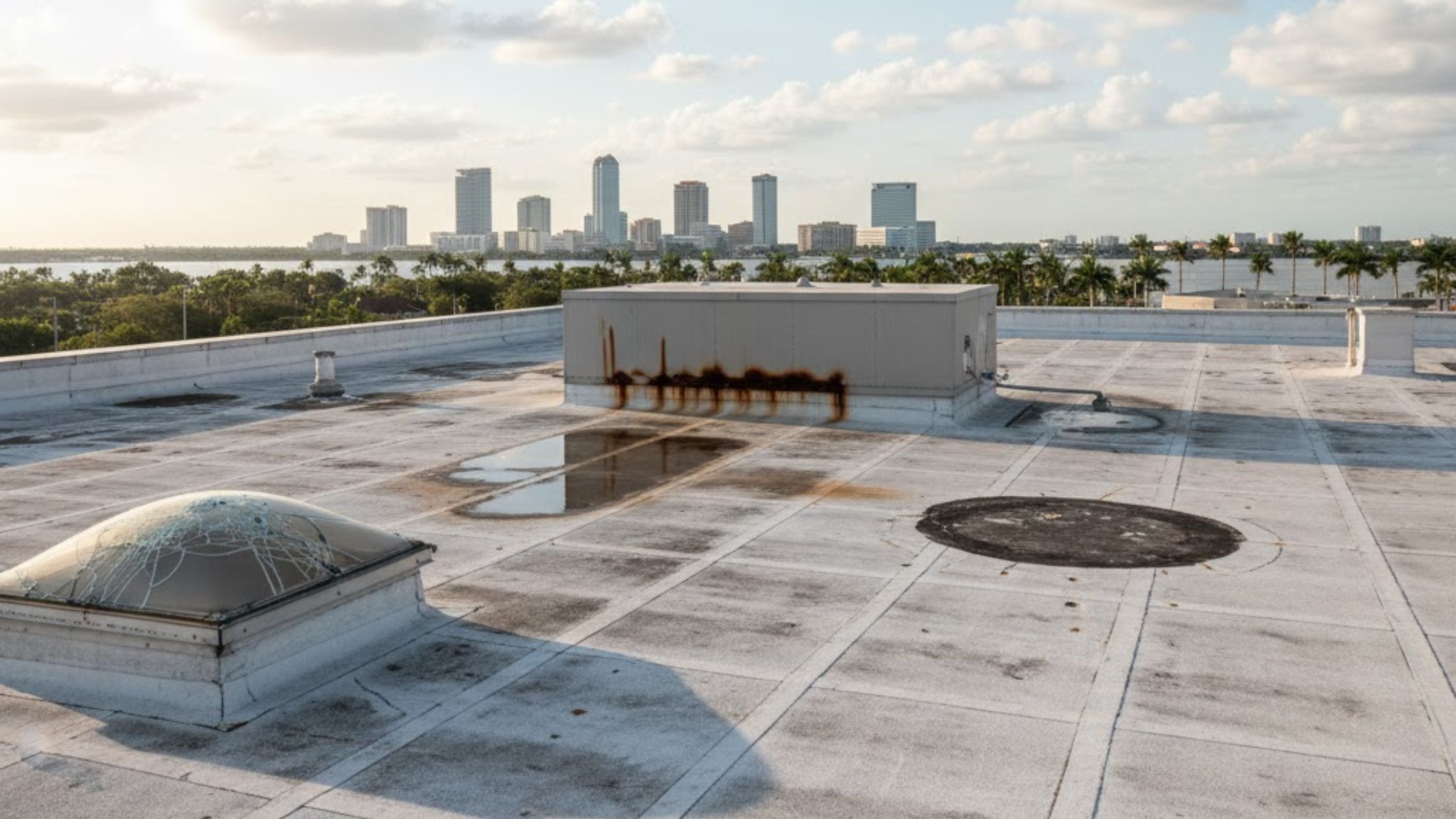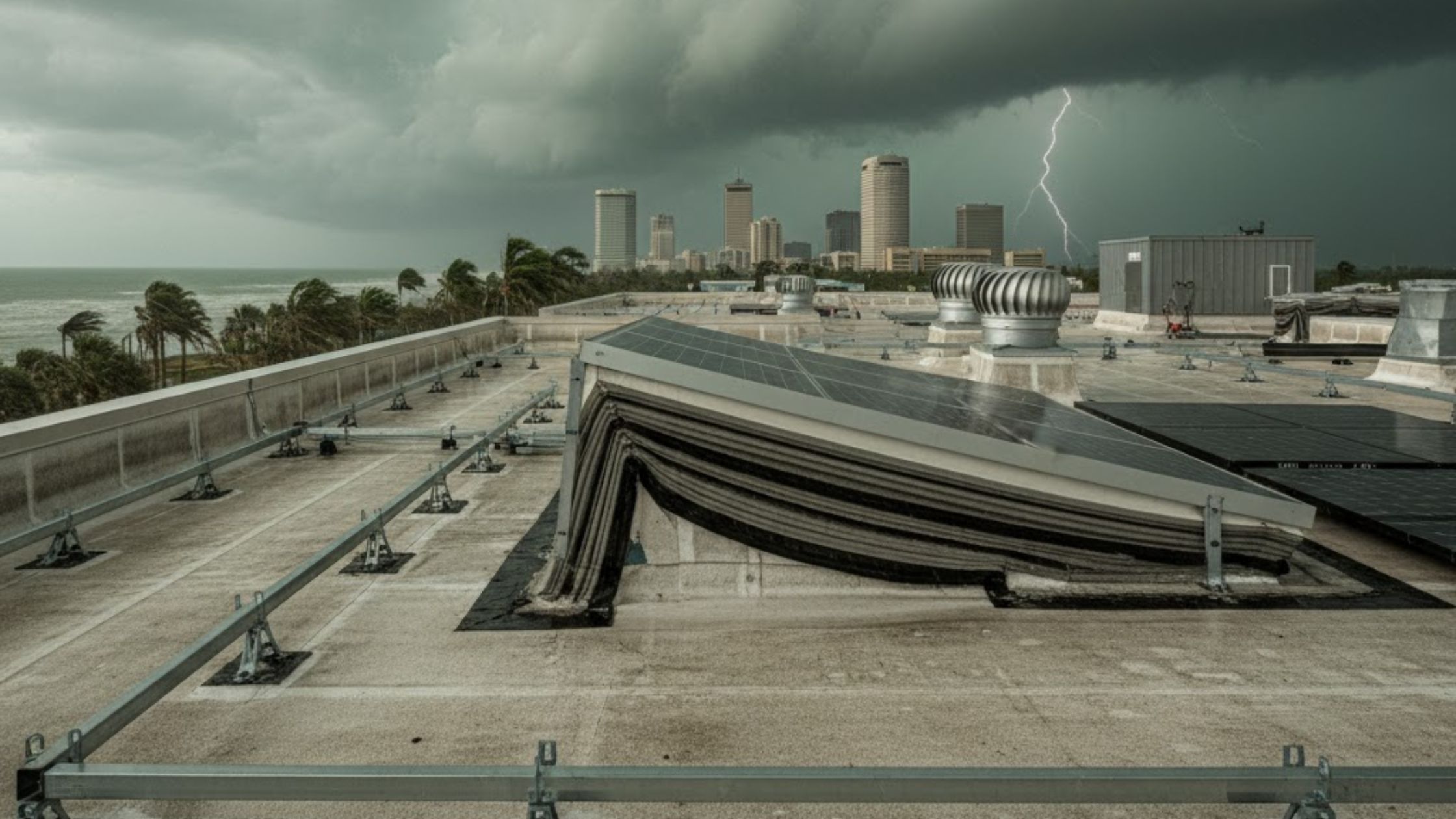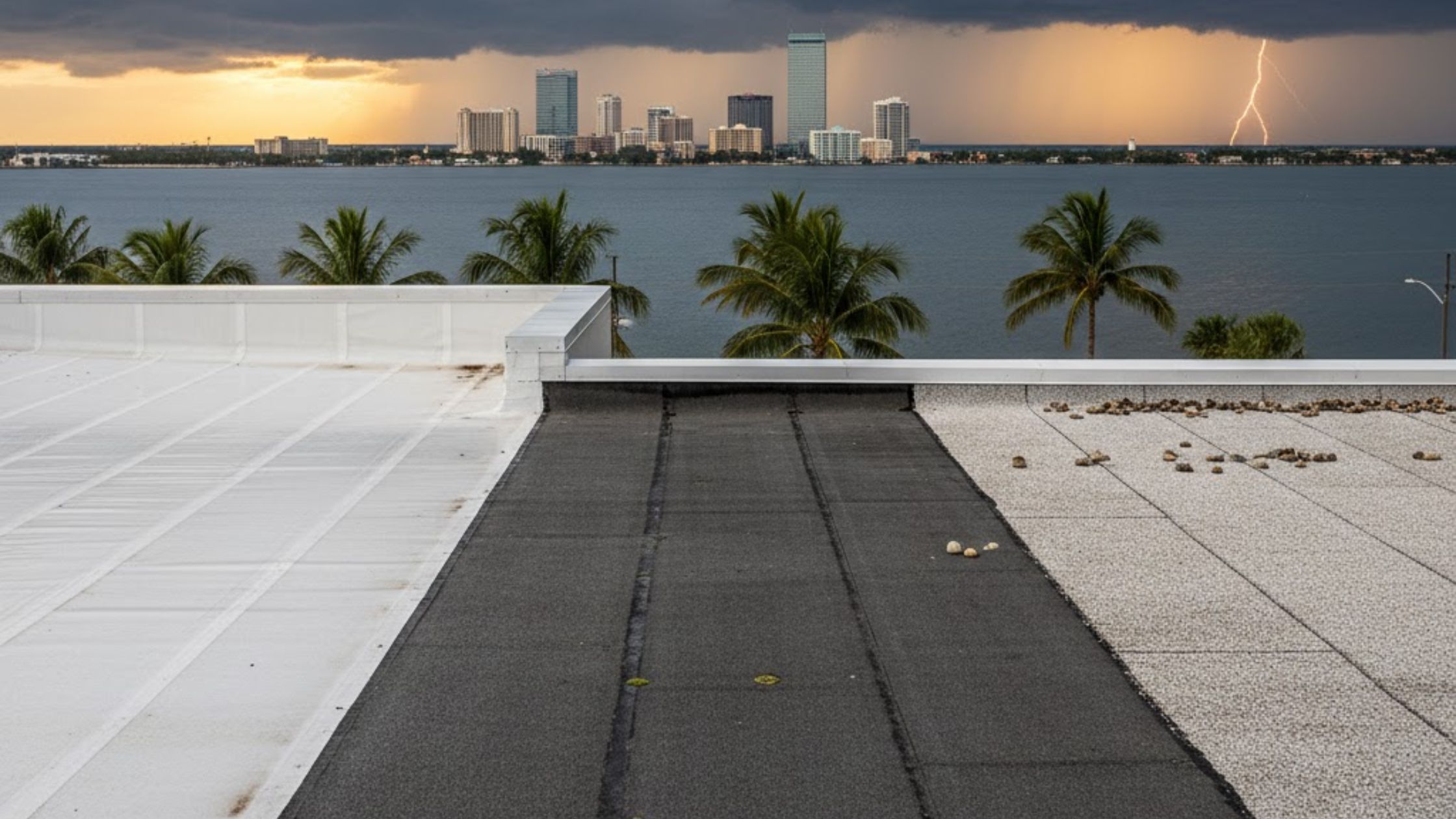How Do Tampa’s Hurricanes and Humid Weather Impact Shingle Roof Longevity?
Learn how Tampa’s hurricanes, humidity & heat impact shingle roof longevity. Discover tips to extend roof life and protect your home from Florida’s weather!
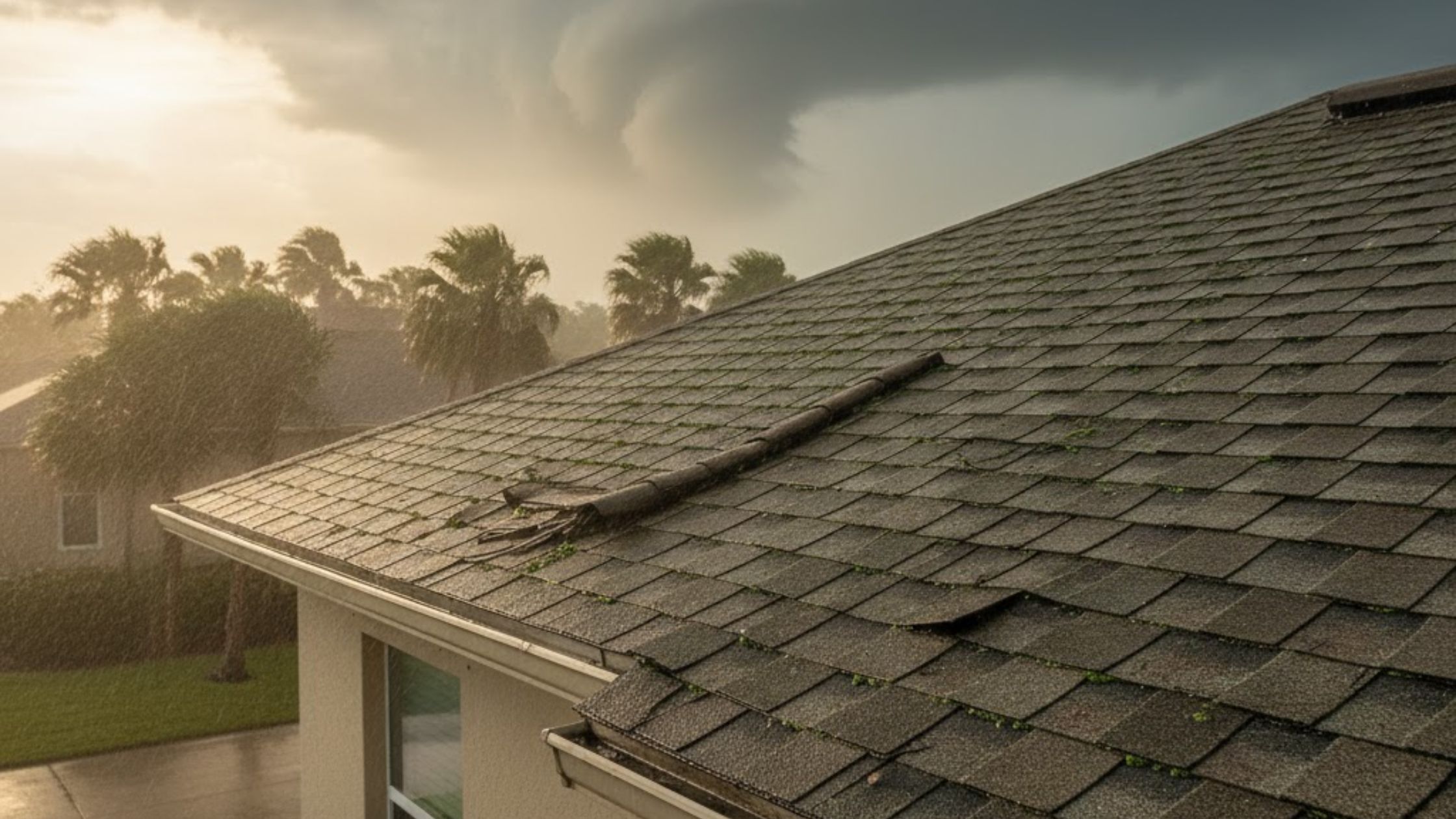
Living in the Tampa Bay area offers beautiful coastal scenery and endless sunshine, but it comes with a significant challenge: extreme weather that relentlessly tests the resilience of your home, especially the roof. For many local residents, asphalt shingles are the popular choice due to their versatility and initial cost, yet the real question is how long they can truly withstand the continuous assault from tropical humidity, blazing ultraviolet (UV) rays, and the inevitable high-wind events of hurricane season. Understanding this relentless deterioration cycle is the first critical step in protecting your investment and preventing catastrophic damage. This deep dive explores the precise mechanisms of wear and tear caused by the local climate, helping you determine the best time for a Shingle Roof Replacement Tampa service before a small issue turns into a major disaster.
The combination of factors—torrential rain, intense heat, and powerful storm forces—creates an environment where a roof ages far more quickly than in milder climates. When asphalt shingles fail prematurely, it is rarely due to a single event but rather a cumulative breakdown of their protective structure over many years. This constant exposure demands a proactive approach to maintenance and replacement, ensuring your home remains a safe and dry haven throughout the year.
What is the Real-World Expectancy for Shingle Roof Longevity in the Tampa Area?
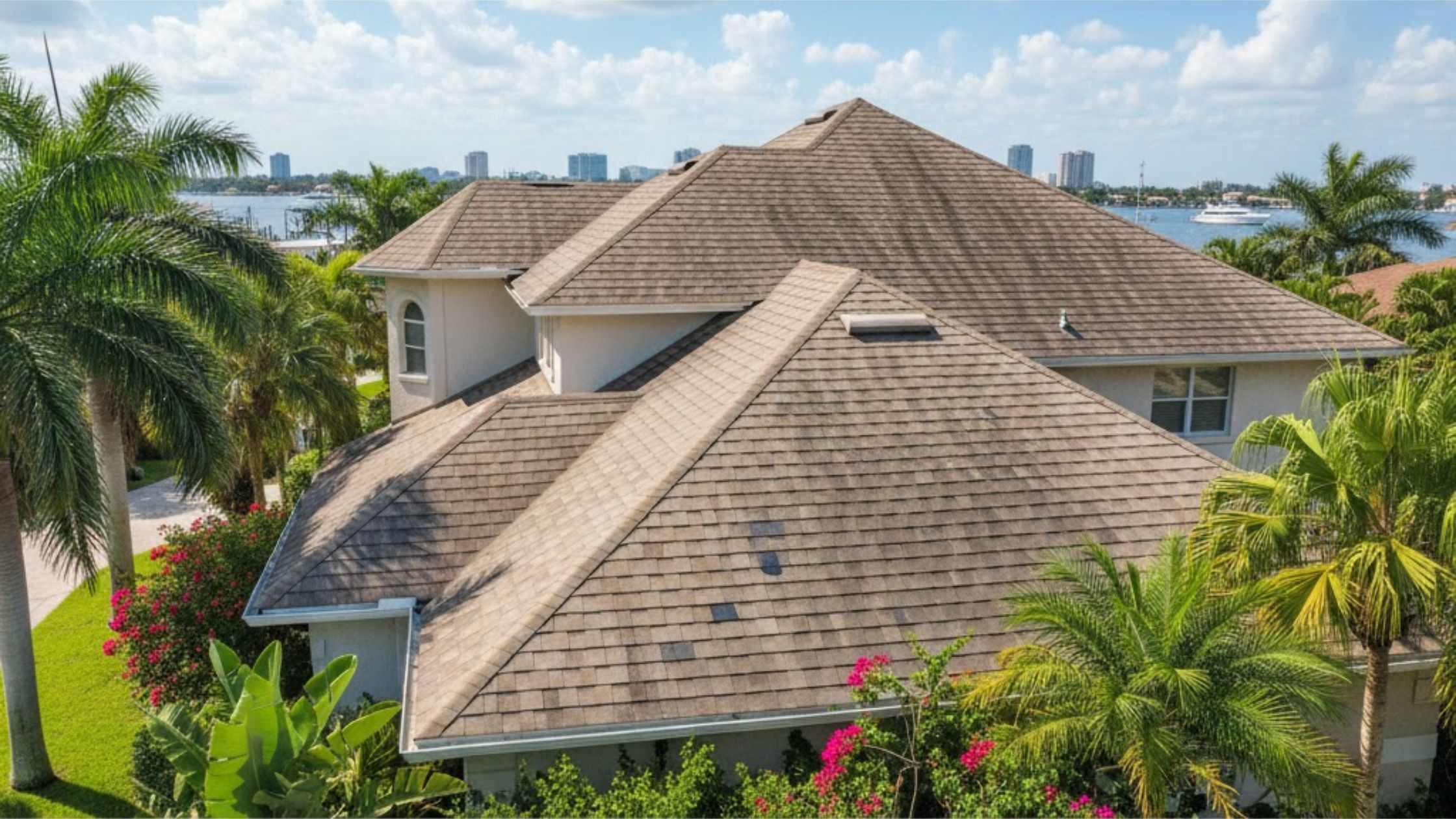
The lifespan printed on a package of asphalt shingles, such as 25 or 30 years, often reflects performance under ideal laboratory conditions or in moderate climates far removed from Florida’s severe heat and humidity. These manufacturer ratings provide a baseline, but the reality on the Suncoast is often quite different. The constant thermal expansion and contraction, coupled with persistent moisture, significantly shorten the effective service life of most roofing materials. This harsh environment means that if a shingle is rated for thirty years, it may only deliver twenty or twenty-two years of high-performance protection before showing serious signs of failure.
In the Tampa region, you must factor in what roofing experts refer to as the "Florida climate tax." This tax is paid in the form of accelerated material breakdown and granule loss, the key protective layer of an asphalt shingle. When the granules—the small, ceramic pieces embedded in the asphalt—are stripped away by heavy rain and intense sunlight, the exposed asphalt material rapidly dries out, becoming brittle and prone to cracking. This brittle state makes the shingles highly susceptible to being lifted or torn during even moderate wind events.
The Difference Between 3-Tab and Architectural Shingles
Homeowners often choose between two primary types of asphalt shingles: 3-tab and architectural, also known as dimensional shingles. The choice between these two materials has a profound impact on how well your roof will fare against local weather.
3-tab shingles are the most basic and affordable option, consisting of a single layer and a flat appearance. While they are cost-effective upfront, their thinner profile provides minimal resistance to high winds and impacts. In a climate defined by strong storms and occasional hail, their lifespan is dramatically reduced, often only lasting 10 to 15 years before replacement becomes necessary. They are generally not recommended for areas like Tampa that fall within high-wind hurricane zones.
Architectural shingles, by contrast, are made from multiple layers of asphalt and fiberglass mat, laminated together to create a thicker, more textured, and dimensionally attractive appearance. This layered construction provides superior defense against the elements. They are significantly heavier, which increases their wind resistance, and the added bulk provides a much greater tolerance for thermal stress and UV damage. These shingles typically last 20 to 30 years, offering a much better return on investment in a storm-prone area.
The Florida Climate Tax on Roof Lifespan
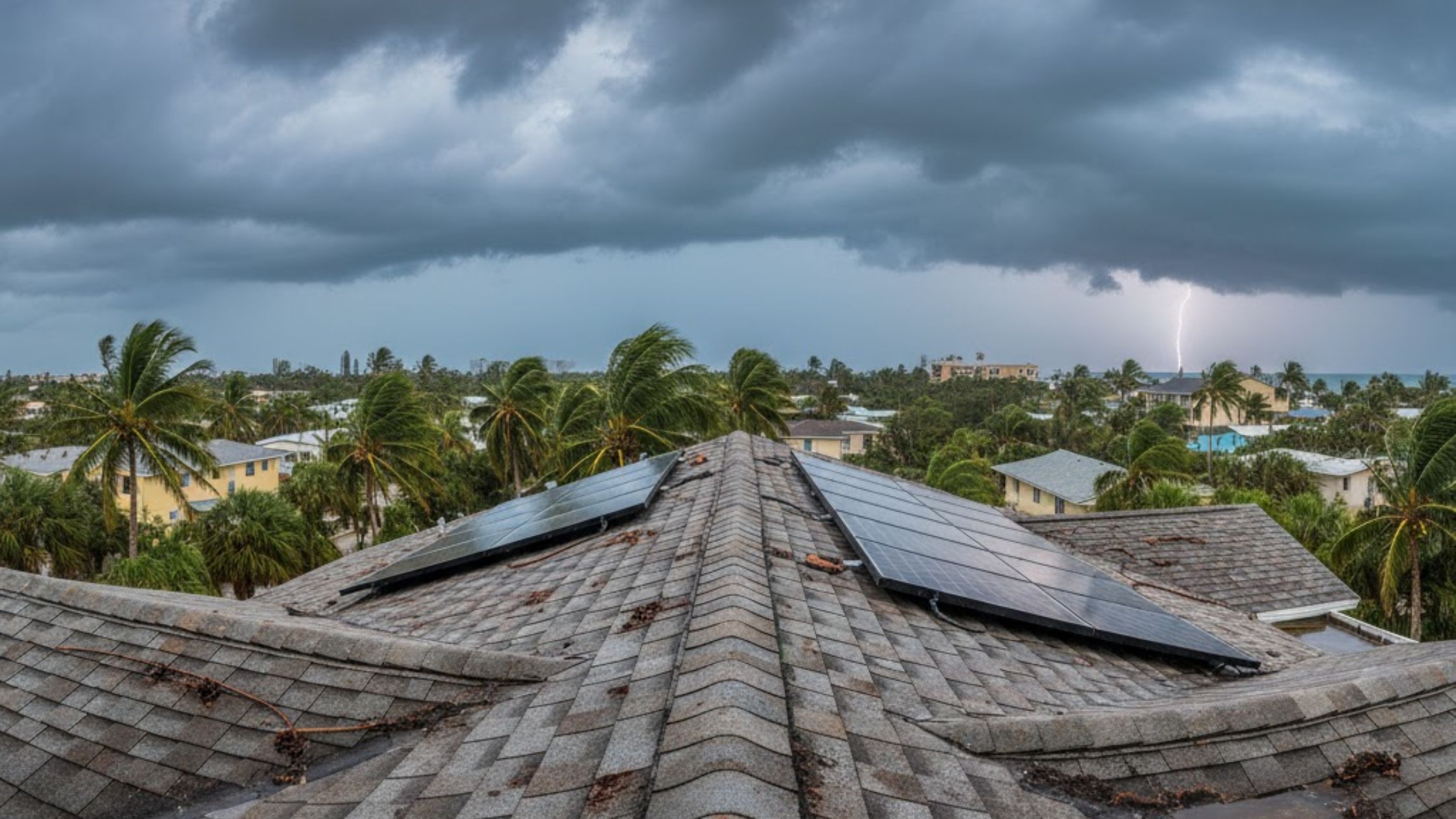
The high ambient heat and humidity are chronic stressors on a roof system. Unlike the acute stress of a hurricane, these factors work quietly and consistently every day of the year to break down the material. Shingles are designed to be flexible, but the continuous cycle of daytime heat that causes expansion and nighttime cooling that causes contraction eventually fatigues the asphalt layers. This fatigue leads to edge curling and buckling, creating vulnerabilities where water can penetrate the protective surface.
The lifespan reduction is so predictable that experienced roofing professionals can often estimate the age of a roof by examining the extent of its degradation. This accelerated aging process is why regular inspections are so crucial for homeowners in the area. Ignoring these subtle signs of wear means you are essentially waiting for the next major storm to reveal a pre-existing weakness, turning a manageable repair into a complete system failure. If you are noticing widespread granule loss, curling, or dark streaks, it might be the right time to seek a Shingle Roof Replacement Tampa consultation to evaluate the roof’s true structural integrity.
The Hurricane Factor: High Winds and Debris Impact
Tampa’s designation as a high-velocity hurricane zone necessitates roofing materials and installation methods that go far beyond standard requirements found elsewhere in the country. Hurricanes bring a devastating combination of sustained high winds, intense rain, and airborne debris, all of which specifically target the roof as the home’s primary shield. The sheer force of the wind, even in storms that do not make a direct hit, is engineered to find and exploit any weakness in the roofing system, leading to immediate failure and catastrophic water intrusion.
The high winds do not just rip off shingles; they exert varying degrees of pressure—positive pressure on the windward side and negative pressure (or suction) on the leeward side. This negative pressure is what causes the uplift force that literally pulls the roof covering away from the decking. The critical weak points are the edges, corners, and areas around penetrations, such as chimneys and vents, where the wind can easily find a seam to exploit and start a progressive failure.
Understanding Wind Uplift Mechanics
Wind uplift is the single greatest threat to a shingle roof during a major storm. The force is a complex aerodynamic principle, often compared to the lift generated by an airplane wing. When strong winds pass over the curved surface of a roof, a vacuum-like suction is created, attempting to peel the shingles away. This force increases exponentially with wind speed. For instance, a small doubling of wind velocity can result in a four-fold increase in uplift pressure on the roof structure.
Modern roofing systems combat this by using advanced sealants and enhanced nailing techniques. However, for older roofs, the factory-applied sealant strips may have lost their adhesion due to years of heat exposure and repeated wetting cycles. Once the seal is broken, the wind can get underneath the shingle tab, forcing it upward and eventually tearing it off the roof deck, exposing the underlayment to immediate moisture intrusion. It is crucial to have your roof inspected to verify that the protective seals and adhesion strips are still fully functional.
The Role of Proper Nailing Patterns
The difference between a roof that survives a hurricane and one that fails can often come down to the precise number and placement of the roofing nails. The Florida Building Code dictates strict nailing requirements for shingle installation, typically requiring six nails per shingle instead of the four used in less storm-prone regions. Using the correct size and type of nail, and placing them accurately in the shingle's nailing strip, is essential for resisting wind forces.
An incorrect nailing pattern—even a few millimeters too high or too low—can significantly reduce the shingle's pull-through resistance. When a professional team like CB Roofing Solutions installs your roof, they adhere rigidly to these local codes, ensuring that the entire system is properly anchored. This adherence guarantees the roof meets or exceeds the necessary wind resistance standards for Hillsborough County. A poorly installed roof, even with high-quality materials, will invariably fail prematurely under storm conditions.
Impact Resistance and Hail Damage
While the Tampa area does not experience large, frequent hailstorms like other parts of the country, hail remains a significant threat to shingle integrity. Hailstones, even small ones, can cause micro-fractures in the asphalt or knock off concentrated amounts of protective granules. Larger impacts from wind-borne debris, such as tree branches or yard furniture, pose an even greater danger. These impacts can puncture the shingle, the underlayment, and sometimes even the roof decking itself.
When an impact occurs, the resulting damage is not always immediately visible from the ground. A fractured shingle might remain in place, but the underlying layers have been compromised, creating a slow-leak vulnerability that only becomes apparent weeks or months later with interior water staining. The highest-rated storm resistant shingles FL uses are designated as Class 3 or Class 4 impact rated, offering greater defense against these hazards. After any significant storm, it is highly recommended to have a professional inspection to identify this kind of covert damage. For those evaluating the long-term cost, reviewing the Tampa Shingle Roof Replacement Cost can help justify investing in premium, impact-resistant shingles upfront.
The Pervasive Threat of Tampa's Humidity and Heat
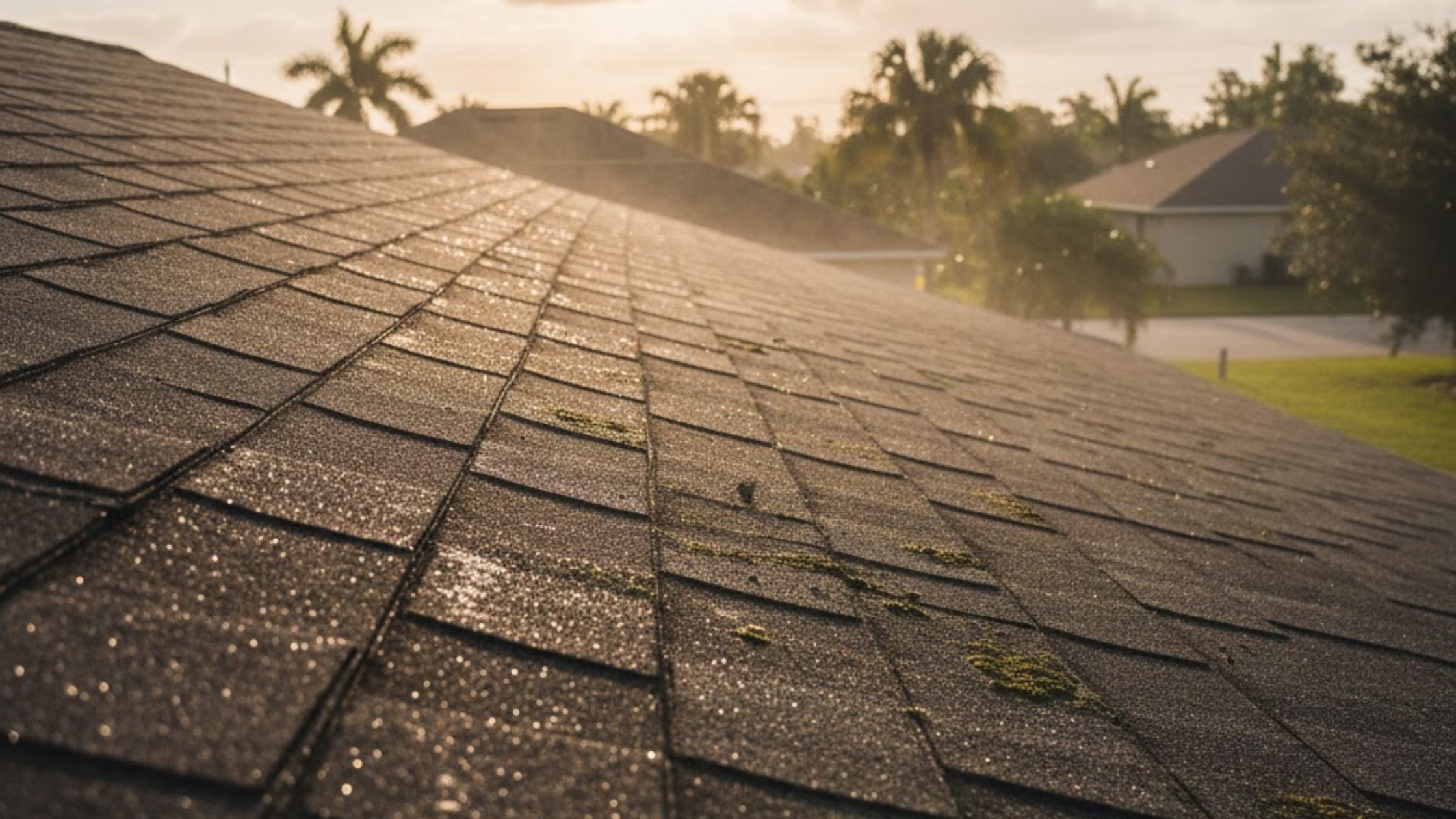
The second major climate stressor is the constant, year-round humidity and high temperatures, which contribute to biological and chemical degradation of the roofing materials. Unlike the sudden, acute threat of a hurricane, humidity works slowly but relentlessly, creating the ideal conditions for unwanted organic growth and accelerating the sun's damaging effects. Homeowners often mistake the signs of this deterioration for simple aging, unaware that these issues are actively compromising the roof’s structural integrity and ability to shed water effectively.
The warm, moist air of the Gulf Coast region makes every part of the roof susceptible to biological infestation. The asphalt and limestone granules used in many shingle manufacturing processes can unfortunately become food sources for various types of mold, mildew, and algae. If not addressed, this growth shortens the lifespan of the shingles and compromises their ability to reflect solar heat, leading to even higher attic temperatures.
The Danger of Algae and Mold Growth
The black streaks visible on many Tampa Bay roofs are caused by a specific type of blue-green algae called Gloeocapsa magma. This organism thrives in the moist environment of asphalt shingle surfaces, feeding on the limestone filler in the shingles. While the algae itself is primarily aesthetic, its presence indicates a moist surface that is constantly shaded by the organism. This shade keeps the shingle damp for longer periods after rainfall, accelerating the breakdown of the asphalt binder and promoting the growth of more destructive molds underneath the surface.
To combat this, manufacturers often incorporate copper granules into the shingle surface. When rainwater washes over the roof, the copper ions are released, acting as a natural biocide to inhibit algae growth. Choosing algae-resistant or "AR" shingles is essential in this climate. If you are looking for long-term protection, ensuring your new roof includes this technology is a small investment that offers substantial defense against the Florida humidity.
How Intense UV Radiation Degrades Shingles
The sun’s ultraviolet radiation in Central Florida is intense, and it poses one of the most significant long-term threats to asphalt shingles. The granules on the shingle surface serve two primary purposes: to give the roof color and to absorb or reflect the damaging UV light. Over time, the UV rays break down the chemical bonds in the asphalt binder, causing it to oxidize and dry out. As the binder hardens, the granules begin to loosen and wash away into the gutters.
Once a large quantity of granules is lost, the underlying asphalt is directly exposed to the sun. This rapid drying and cracking accelerate the degradation process dramatically, turning a 30-year shingle into a 15-year roof. The exposed asphalt becomes brittle and highly vulnerable to thermal cracking. This is an unavoidable fact of life in Florida, emphasizing the need for high-quality, reflective, and durable materials when undertaking a significant project. To ensure you have access to the best available professional expertise, consider choosing Reliable Roofing Services Near Tampa that understands these specific environmental demands.
Ventilation: The Key to Fighting Attic Heat
A critical yet often overlooked factor in shingle longevity is attic ventilation. In the extreme heat of the Tampa summer, a poorly ventilated attic can reach temperatures exceeding 150 degrees Fahrenheit. This superheated air essentially cooks the shingles from the inside out. The excessive heat causes the volatile oils within the asphalt shingle to evaporate prematurely, accelerating the drying and cracking process.
Proper attic ventilation, including adequate intake (soffit vents) and exhaust (ridge or box vents), is essential. This system works to create a continuous flow of air that vents the trapped heat and moisture out of the attic space, keeping the underside of the roof deck and the shingles cooler. A properly ventilated roof system can perform at its intended level for a much longer time, saving the homeowner significant energy costs and preserving the roofing material's integrity. It helps to ensure that the heat stress on the materials is minimized throughout the long, hot season.
Choosing the Right Defense: Selecting Storm-Resistant Materials
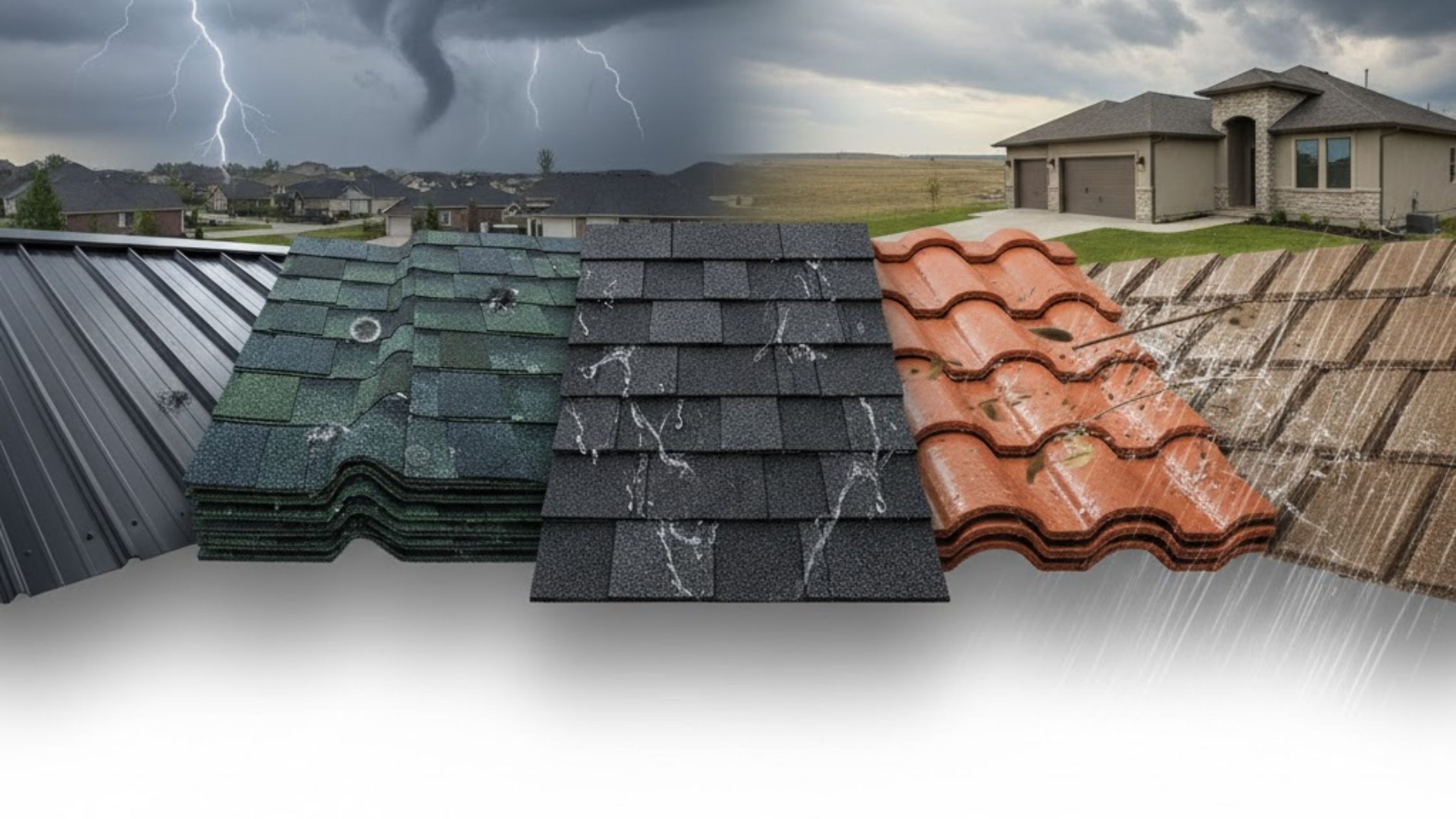
When the time comes for a full roof system upgrade, simply installing new standard asphalt shingles is not enough to secure your home against future storms. Modern roofing technology offers many improvements specifically designed to counteract Florida's intense weather patterns. The key is to select materials and accessories that work together as a complete, integrated system to provide maximum defense against wind, water, and heat. The investment in these high-performance components far outweighs the expense of dealing with repeated storm damage and subsequent claims.
The materials you choose should not just meet the minimum requirements of the Florida Building Code; ideally, they should exceed them. This practice provides an extra layer of peace of mind during hurricane season. Look for products that feature enhanced adhesion, thick layered construction, and certified wind resistance ratings of 130 miles per hour or higher. These specifications are your best indicator of a shingle's ability to remain fastened to the deck when the most severe tropical storm systems arrive.
Features of Premium Architectural Shingles
Premium architectural shingles are engineered specifically for high-stress environments. They feature several key attributes that make them superior to their 3-tab counterparts:
- Laminated Construction: They are composed of two or more layers bonded with a durable asphalt sealant, which provides depth and vastly increases their tear strength and weight. This weight is crucial for keeping them secured.
- Enhanced Sealant Strips: High-performance shingles utilize wider, more aggressive sealant strips that are formulated to activate and bond securely under lower heat conditions, creating a stronger, monolithic seal against wind uplift.
- Copper Granule Integration: As mentioned, the inclusion of copper granules provides built-in resistance to algae, keeping the roof reflective and minimizing surface degradation due to moisture-trapping organic growth.
- Certified Wind Resistance: Many top-tier architectural shingles come with high-wind warranties, sometimes even carrying an "unlimited" wind speed rating when installed as part of the manufacturer’s full system. This warranty provides strong assurance against damage.
The Importance of a Secondary Water Barrier
During a hurricane or severe storm, the primary defense—the shingles—can be compromised. Wind can tear off shingles, and falling debris can cause punctures, leaving the underlayment exposed. This is where the secondary water barrier (SWB), or 'peel-and-stick' underlayment, proves its value. It is a self-adhering modified bitumen membrane that is applied directly to the roof deck before the shingles are installed.
The secondary water barrier acts as a final, waterproof seal over the entire roof deck, preventing water penetration even if the outer shingle layer is completely breached. It effectively seals around the thousands of nails used to fasten the shingles, eliminating the most common source of micro-leaks. The Florida Building Code now mandates the use of an SWB in many areas, recognizing its vital role in protecting the structure of the home against water intrusion during the most severe weather events. This single step in the roofing process is arguably the most crucial for hurricane proof roof Tampa protection.
Navigating Shingle Wind Ratings and Warranties
When evaluating materials for your home, pay close attention to the wind resistance ratings, typically tested under standards like ASTM D7158. Look for shingles rated to withstand wind speeds of 130 mph. Crucially, understand the difference between a manufacturer's material warranty and a wind warranty. Many modern shingle systems, when installed with all matching accessories (starter strips, ridge caps, leak barriers), offer a system warranty that covers wind damage up to an exceptionally high threshold.
Choosing a certified, local roofing contractor, such as CB Roofing Solutions, is essential because they are trained and authorized by manufacturers like GAF, Owens Corning, or CertainTeed to install their products to the required specifications. Improper installation will void these superior warranties. By choosing a comprehensive system and a highly qualified installer, you ensure you benefit from both the physical protection of the material and the financial protection of the warranty coverage.
When is it Time to Consider a Full Roof Replacement?
Homeowners often wait until a severe leak or widespread missing shingles force them to act. However, in a high-risk area like Tampa, being reactive can be financially and structurally disastrous. Proactive replacement saves money in the long run by avoiding higher insurance deductibles and preventing interior water damage, which often includes mold remediation and drywall repair. Recognizing the subtle, pre-failure indicators is the key to maintaining a safe home.
The decision to replace should be based on a combination of the roof’s age, the observable condition of the materials, and the adherence to local building regulations. Since the Tampa Bay area is subject to specific code requirements, even seemingly minor damage can trigger a much larger replacement project. This is a crucial element that homeowners must understand before the next severe weather system arrives, as it can dramatically change the scope of required repairs.
The Critical Florida 25% Rule
The Florida Building Code includes a provision often referred to as the "25% Rule." This rule states that if more than 25% of your total roof surface needs repair, modification, or replacement within a 12-month period, you are legally required to replace the entire roof system to bring it up to the current building code standards. This regulation is particularly relevant in the aftermath of large storms, where numerous individual patches of damage can quickly accumulate to exceed the 25% threshold.
This rule emphasizes the fact that even small, scattered areas of weather damage roofing Tampa homes experience can lead to a full-system replacement mandate. While this may seem costly, it ensures that homes are continuously upgraded to withstand modern wind load requirements, ultimately enhancing the safety and longevity of the entire community's housing stock. If your roof is nearing its predicted lifespan, understanding this rule is a strong motivator to replace it proactively rather than risk being forced to do so under a tight deadline after a major storm hits.
Signs of Weather Damage Roofing Tampa Homeowners Miss
Beyond the obvious—missing shingles and visible leaks—there are many subtle signs of deterioration that indicate your roof’s protective life is ending:
- Excessive Granule Loss: If you find large amounts of sand-like asphalt granules accumulating in your gutters or washing out of your downspouts, it means the shingle’s protective layer is rapidly disappearing.
- Curling and Clawing: When shingle edges cup upward (curling) or the center of the shingle raises while the corners remain flat (clawing), it is a sign of thermal fatigue, material shrinkage, and loss of volatile oils. These conditions invite wind uplift and water infiltration.
- Cracked or Broken Shingles: Cracks that run horizontally or vertically across a shingle indicate brittleness. A slight breeze or minor impact could easily turn these cracks into missing pieces.
- Damaged Flashing: Look for gaps, bends, or pulled-away metal flashing around chimneys, vents, and valleys. Flashing is designed to create a watertight seal at roof intersections, and damage here is a direct path for water intrusion.
If you observe any of these issues, it is time to schedule a professional evaluation. An experienced contractor can assess the actual remaining protective life of your roof system. If the decision to replace is made, coordinating the logistics is the next step. To learn about the expected duration of the project, you might want to look into the Tampa Roof Replacement Timeline to prepare your home and family for the short construction period.
Preparing for the Storm: Proactive Maintenance and Inspections
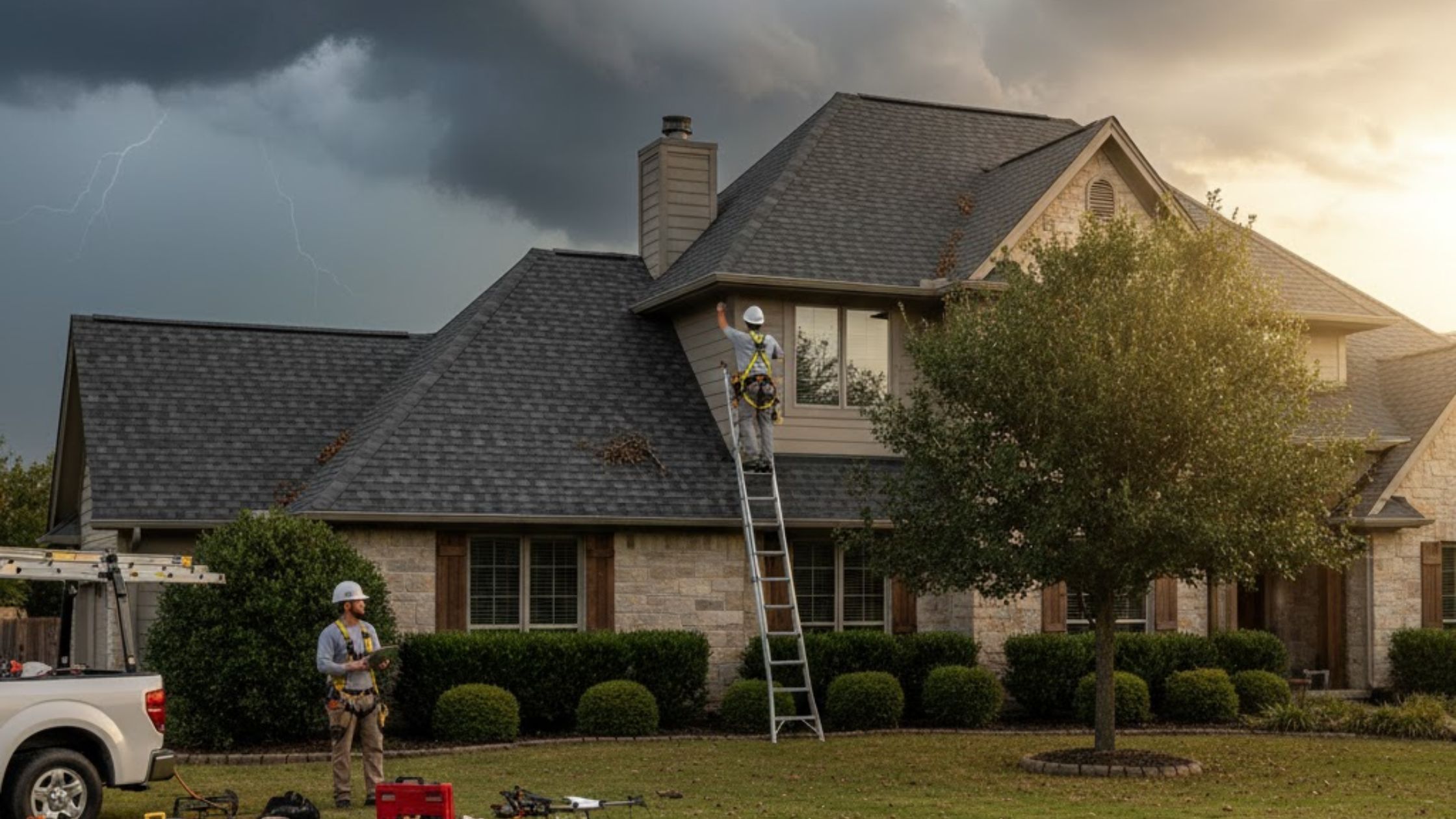
The longevity of any roof in a severe weather environment like Tampa is directly tied to the consistency of its maintenance. Even the highest-quality materials require periodic attention to ensure their protective components are functioning correctly. Think of roof maintenance not as an expense, but as a critical insurance policy against interior damage and structural failure. Regular inspections are the only way to catch small problems, like a loose shingle or blocked drainage, before they compound into a costly emergency.
A thorough, professional roof inspection should be performed annually, ideally before the start of hurricane season in June. This service goes far beyond a casual glance from the ground. A certified inspector will safely walk the roof, checking every detail that might be compromised by the previous year’s weather. They will look for:
- Flashing Integrity: Ensuring all metalwork around vents, pipes, and valleys is tight and correctly sealed.
- Sealant and Fastener Checks: Verifying that all exposed fasteners are covered and that any stress points are sealed against water entry.
- Gutter and Drainage System Clearance: Making sure the gutters are free of debris to allow for rapid water runoff during heavy rains, preventing water from backing up under the roof edge.
- Debris Removal: Removing any overhanging tree limbs or heavy leaf buildup that can trap moisture and promote organic growth.
The goal of this proactive approach is to ensure that when a tropical storm or hurricane approaches, your roof is in peak condition to withstand the onslaught. Regular maintenance, combined with timely repairs, can help you maximize the return on your investment and defer the need for a total replacement until it is truly necessary due to age and unavoidable material fatigue. If you need immediate assistance with identifying vulnerabilities or setting up an annual maintenance schedule, don’t hesitate to contact us directly.
Frequently Asked Questions About Roof Longevity
Navigating the complexities of roofing in a climate that features both extreme heat and violent storms can lead to many questions. Here are five of the most commonly asked questions related to roof longevity and weather in the Tampa area:
1. What is the typical lifespan of an asphalt shingle roof in Florida’s climate?
While manufacturer warranties often claim 25 to 30 years, the realistic lifespan for standard 3-tab asphalt shingles in Florida’s harsh, humid climate is closer to 15 to 20 years. High-quality architectural shingles, which are thicker and feature better resistance to wind and algae, typically last 20 to 30 years. Consistent maintenance and proper attic ventilation are the two most important factors in achieving the upper end of these estimates.
2. Do light-colored shingles help reduce heat in the attic?
Yes, absolutely. Lighter-colored or white "Cool Roof" shingles are specifically designed to reflect a larger percentage of the sun’s radiant heat compared to darker shingles. This reflection keeps the roof surface and the attic space cooler, reducing the internal heat stress on the shingle materials and potentially lowering your home's air conditioning costs significantly during the long Tampa summer months.
3. How does high humidity contribute to shingle damage?
High humidity is the primary cause of biological growth, such as mold and blue-green algae, on the roof surface. This organic matter traps moisture, which accelerates the breakdown of the asphalt binder in the shingle. Over time, the constant moisture penetration reduces the shingle's protective effectiveness, leading to premature aging, granule loss, and a weaker defense against wind and rain.
4. What is the minimum wind rating I should look for in new shingles?
For the Tampa Bay region, which falls within a high-wind zone, you should look for shingles that are rated to withstand wind speeds of at least 130 miles per hour, as dictated by standards like ASTM D7158. However, many advanced systems offer warranties covering even higher, potentially unlimited, wind speeds when the full, approved accessory package is installed by a certified contractor.
5. Is it necessary to replace the underlayment during a shingle replacement?
Yes, it is highly recommended and often required by the Florida Building Code, especially if the new roof is required to meet modern standards. The underlayment, particularly the self-adhering secondary water barrier, is essential for sealing the roof deck. Since the existing underlayment is aged and will be perforated by nail holes from the original installation, a complete replacement ensures a continuous, watertight seal is achieved before the new shingles are applied.
Conclusion: Securing Your Home Against Florida's Extremes
Protecting your home in the Tampa area requires more than just a roof; it demands a comprehensive, weather-resistant roofing system. The relentless cycles of heat, humidity, and the unavoidable threat of tropical storms require materials and installation techniques specifically engineered for this unique, challenging environment. By understanding how UV degradation, biological growth, and wind uplift work together to shorten the lifespan of your asphalt shingles, you can make informed, proactive decisions that save you stress and money in the long run.
Choosing the right materials—such as premium architectural shingles with algae resistance and superior wind ratings—is only half the battle. The quality of the installation, including adherence to Florida’s strict nailing patterns and the mandatory use of a secondary water barrier, determines the roof’s true resilience. When the signs of aging appear, such as granule loss or curling, don't wait for a leak or a hurricane to force your hand. Instead, schedule a detailed inspection to assess the real remaining life of your current system.
The difference between a functional, code-compliant roof and one that fails in the next major storm is often the difference between adequate and exceptional installation. For homeowners seeking the highest standards of protection and adherence to local regulations, partnering with a local expert is the crucial final step. For guidance, high-quality materials, and peace of mind during hurricane season, look to the trusted professionals at CB Roofing Solutions. They specialize in providing long-lasting, Shingle Roof Replacement Tampa solutions designed to endure everything the Gulf Coast climate can throw at them, ensuring your home remains secure for decades.

